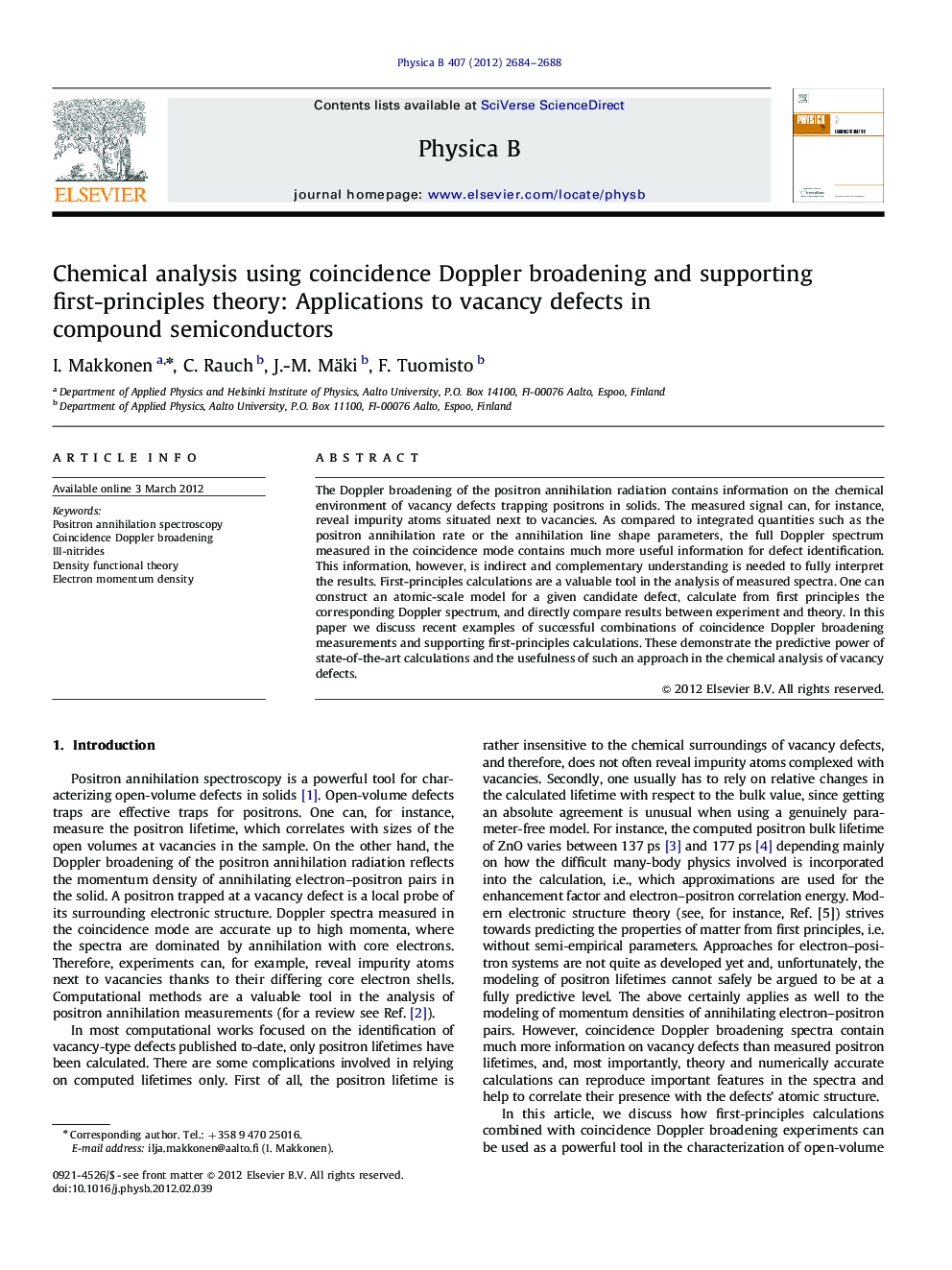| Article ID | Journal | Published Year | Pages | File Type |
|---|---|---|---|---|
| 10714056 | Physica B: Condensed Matter | 2012 | 5 Pages |
Abstract
The Doppler broadening of the positron annihilation radiation contains information on the chemical environment of vacancy defects trapping positrons in solids. The measured signal can, for instance, reveal impurity atoms situated next to vacancies. As compared to integrated quantities such as the positron annihilation rate or the annihilation line shape parameters, the full Doppler spectrum measured in the coincidence mode contains much more useful information for defect identification. This information, however, is indirect and complementary understanding is needed to fully interpret the results. First-principles calculations are a valuable tool in the analysis of measured spectra. One can construct an atomic-scale model for a given candidate defect, calculate from first principles the corresponding Doppler spectrum, and directly compare results between experiment and theory. In this paper we discuss recent examples of successful combinations of coincidence Doppler broadening measurements and supporting first-principles calculations. These demonstrate the predictive power of state-of-the-art calculations and the usefulness of such an approach in the chemical analysis of vacancy defects.
Keywords
Related Topics
Physical Sciences and Engineering
Physics and Astronomy
Condensed Matter Physics
Authors
I. Makkonen, C. Rauch, J.-M. Mäki, F. Tuomisto,
